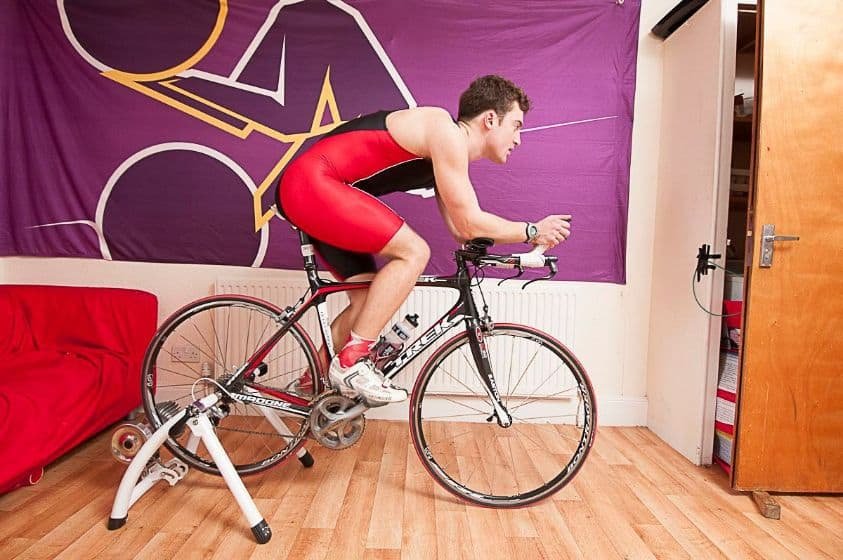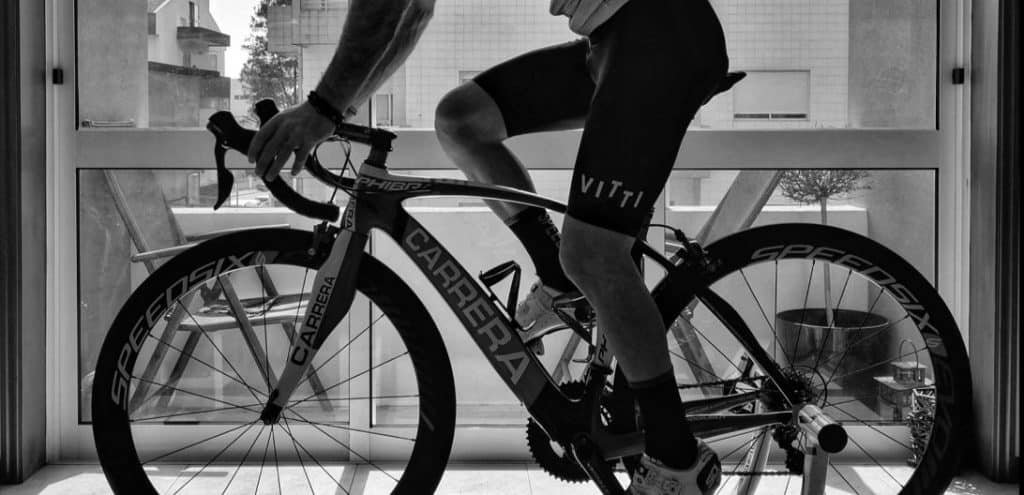Will a Turbo Trainer Ruin My Bike & Its Frame?
If you’ve been doing your research about turbo trainers and bikes then you might have heard that they can damage your bike frame, with some people reporting corrosion on the front of there bikes and fractures on the frame after using their bike regularly with a turbo trainer.
So as we can put your mind at ease, we can confidently tell you a turbo trainer will unlikely damage your bike as long as you take care of setting it properly with a few other considerations. This is not to say damage can’t occur from a turbo trainer, because it can, especially on carbon fibre bike frames, elements such as sweat and force could potentially cause damage, but only if you avoid taking precautions.
To help you stop any damage from occurring with your bike and its turbo trainer, we have put together a guide that will explain to you the common causes of damage from a turbo trainer, and how to prevent them from happening so you can keep your bike as good as new.
Do Turbo Trainers Damage Your Bike?
As we touched on above, turbo trainers do have the potential to damage a carbon fibre bike frame, but this happens rarely and can be prevented easily with some tips and tricks that we will get into later.

Firstly, to work out whether a turbo trainer can damage your bike or not you should figure out the kind of bike frame you have, a cheap metal frame is not likely to suffer much damage, however, due to the composition of carbon fibre, there could be a possibility.
Most of the damage that can occur in these bike frames isn’t due to the turbo trainer itself, but due to external causes such as sweat or not tightening the bike properly.
Any issues that come from the turbo trainer hare worn-down tyres due to the friction between the bike and the rollers (which can be fixed by using a spare road tyre) or stress fractures which are again, unlikely if you have set your bike up properly.
What Are The Causes Of Damage In Bikes With Turbo Trainers?
Now we know that the turbo trainer itself is unlikely to cause any damage to your bike frame, we will go over the most common causes that could cause problems with your bike so as you can understand how to avoid this damage from happening.

- Overtightening your bike – If you overtighten your bike’s frame then it will likely split, especially on the seat post and stems, combined with the power of the trainer it could cause your frame to get damaged.
- Tightening your bike too much on the rear roller – As we said above, overtightening is a no go with carbon fibre bike frames especially, and can be a mistake that occurs often as people are not used to the lightweight frames of the bike. Tightening your trainer too much to the rear of your bike could it to compress the hub bearings on your bike and create issues, your wheel should always be able to turn freely, if not then you have tightened it too much.
- Having a not secure skewer – The skewer you are using with your bike and trainer should be very secure and fit the mounting points correctly on your bike.
- Using the wrong tyres – If you are using mountain bike knobby tyres on your bike and wondering why they are getting ‘damaged’ or worn down so quickly then you likely need to use a tyre with fewer tread patterns or a special trainer tyre to avoid ruining your favourite original ones, save these for the road!
- Sweating on the handlebars – Believe it or not, sweat is one of the most common causes of damage to a bike frame in a turbo trainer. This happens where the carbon meets the alloy on the frame of your bike, allowing the electrolyte of sweat to cause corrosion on your bike’s frame.
Are There Ways To Stop Stress & Corrosion On My Bike With a Turbo Trainer?
Luckily, you can stop stress and corrosion from happening on your bike with some simple tips that we will mention below, as problems such as sweat and overtightening are issues caused by us, not the turbo trainer itself.

- Tailor your training style & use a good trainer – Some turbo trainers will allow your trainer to move from side to side as you cycle, putting less stress on the frame of your bike while you ride, you could also avoid doing hill climbs and out of saddle sprints to further reduce the chance of stress damage on your bike.
- Use a fan to keep cool – To reduce the chances of you sweating, a fan will help keep you cool while you workout.
- Put a towel over the handlebars – An effective way to stop sweat from causing corrosion on your handlebars is by placing a towel over the top of them to catch any sweat that falls while you cycle.
- Don’t use a carbon fibre bike – Carbon fibre bikes are very expensive, and you might be better of using a cheaper aluminium frame bike instead of carbon on your turbo trainer to reduce the chances of damage to your expensive bike.
- Check the wheel of your bike can freely turn – So as you can be sure you have not overtightened your bike, check the wheel can spin freely, if not then its too tight.
- Wipe it down after use – One great way to avoid corrosion is by wiping down your carbon fibre bike after you use it, this will remove the sweat and its salt content before it has a chance to corrode your frame.
Frequently Asked Questions About Turbo Trainers Damaging Bikes
Why does sweat corrode carbon fibre frames?
Sweat can corrode carbon fibre frames where it makes contact with aluminium, such as on the handlebars and bottle holder, this is due to the electrolytes in the sweat and over time will cause an inevitable break down, use a sweat towel and wipe your bike down after use to stop this from happening.
Can turbo trainers damage my bike’s tyres?
Yes, one thing that turbo trainer can damage is your tyres, due to the friction being high and creating worn down tyres. That’s why its best to either use special turbo trainer tyres with your bike when you have it attached to your trainer or get some spare road bike tyres instead which aren’t too expensive, then simply replace them with your original ones when you head back out onto the road.
What is the skewer for a trainer?
A skewer normally comes with your trainer to hold your rear wheel in place during use, you should always make sure that this skewer fits correctly and is secure to avoid any issues when cycling.

Final Words
Overall, turbo trainers have a very small chance of damaging your bike, even if it is a carbon fibre frame, just ensure that you never overtighten light frames like this and avoid sweating on your bike by using a towel.
You should also think about using a cheaper metal framed bike instead which wouldn’t cost as much to repair in case of any damage.
